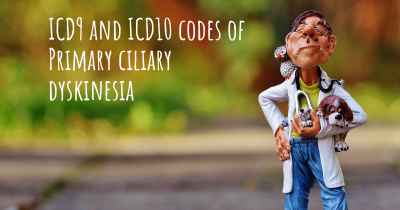Primary ciliary dyskinesia diet. Is there a diet which improves the quality of life of people with Primary ciliary dyskinesia?
Are you aware of a diet that can improve the quality of life of people with Primary ciliary dyskinesia? Is there a diet that is suggested to avoid when having Primary ciliary dyskinesia? See if there is a diet that can improve the quality of life of people with Primary ciliary dyskinesia, recommended and to avoid food when having Primary ciliary dyskinesia

Primary Ciliary Dyskinesia Diet: Improving Quality of Life
Primary ciliary dyskinesia (PCD) is a rare genetic disorder that affects the function of cilia, tiny hair-like structures found in the respiratory tract, reproductive system, and other organs. These cilia play a crucial role in clearing mucus and debris from the airways, facilitating proper lung function. While there is no specific diet that can cure PCD, adopting a healthy and balanced eating plan can help improve the overall quality of life for individuals with this condition.
The Importance of Nutrition for PCD Patients
Proper nutrition is essential for everyone, but it holds particular significance for individuals with PCD. A well-balanced diet can support the immune system, enhance lung function, and promote overall well-being. While there are no specific dietary guidelines exclusively for PCD, the following recommendations can be beneficial:
1. Maintain a Healthy Weight
It is important for individuals with PCD to maintain a healthy weight to support their respiratory function. Being underweight can weaken the immune system and make it more difficult for the body to fight off infections. Conversely, being overweight can put additional strain on the respiratory system. Consult with a healthcare professional to determine the ideal weight range and develop a personalized plan to achieve it.
2. Consume a Balanced Diet
A balanced diet should include a variety of nutrient-rich foods from all food groups. Focus on incorporating:
- Fruits and Vegetables: These provide essential vitamins, minerals, and antioxidants that support overall health. Aim for a colorful variety to ensure a wide range of nutrients.
- Whole Grains: Opt for whole grain bread, rice, pasta, and cereals to increase fiber intake and provide sustained energy.
- Lean Proteins: Include sources such as poultry, fish, legumes, and tofu to provide essential amino acids for tissue repair and immune function.
- Healthy Fats: Incorporate sources like avocados, nuts, seeds, and olive oil to support heart health and provide essential fatty acids.
- Dairy or Alternatives: Choose low-fat dairy products or non-dairy alternatives fortified with calcium and vitamin D to support bone health.
3. Stay Hydrated
Proper hydration is crucial for individuals with PCD as it helps maintain optimal mucus consistency and supports lung function. Aim to drink an adequate amount of water throughout the day. The exact amount may vary depending on individual needs, so consult with a healthcare professional for personalized recommendations.
4. Limit Processed Foods and Added Sugars
Processed foods and those high in added sugars offer little nutritional value and can contribute to inflammation and weight gain. Minimize the consumption of sugary snacks, sodas, and processed foods, and opt for whole, unprocessed foods whenever possible.
Additional Considerations
While a healthy diet is important for individuals with PCD, it is essential to remember that each person's nutritional needs may vary. Consulting with a registered dietitian who specializes in respiratory conditions can provide personalized guidance and support. They can help develop an individualized meal plan that takes into account specific dietary restrictions, allergies, and preferences.
It is important to note that dietary changes alone cannot cure PCD or replace medical treatments prescribed by healthcare professionals. A comprehensive treatment plan, including medication, airway clearance techniques, and regular medical follow-ups, is essential for managing PCD effectively.
By adopting a balanced and nutritious diet, individuals with PCD can support their overall health, enhance their immune system, and potentially improve their quality of life. Remember to consult with healthcare professionals and registered dietitians to develop a personalized plan that meets individual needs and goals.
Posted Mar 6, 2017 by pcdwhat 1100








